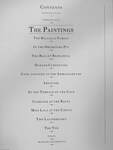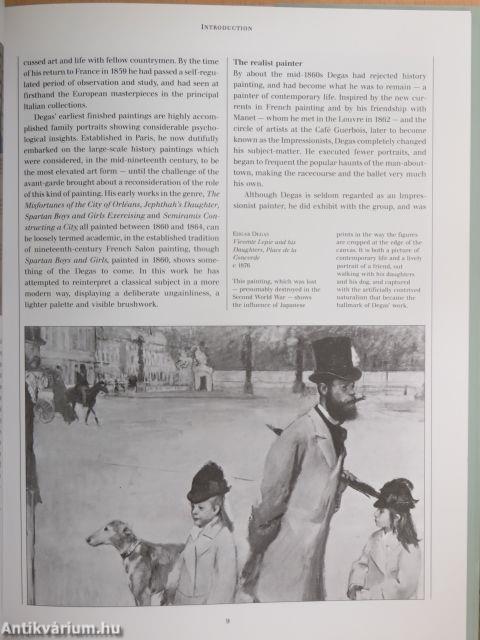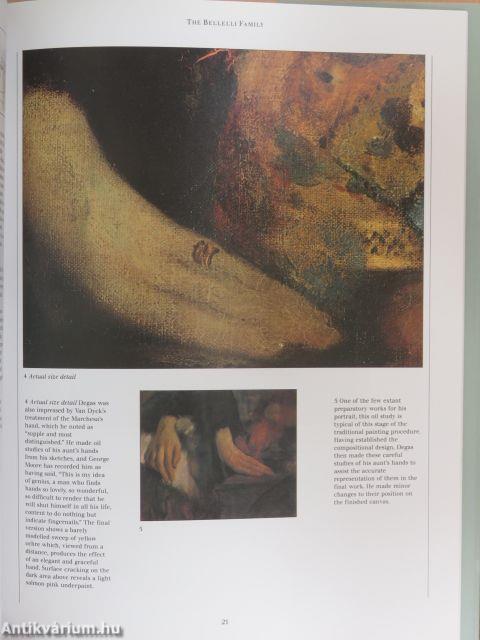1.067.053
kiadvánnyal nyújtjuk Magyarország legnagyobb antikvár könyv-kínálatát

VISSZA
A TETEJÉRE
JAVASLATOKÉszre-
vételek
Degas
| Kiadó: | Tiger Books International |
|---|---|
| Kiadás helye: | London |
| Kiadás éve: | |
| Kötés típusa: | Fűzött keménykötés |
| Oldalszám: | 64 oldal |
| Sorozatcím: | The History and Techniques of the great Masters |
| Kötetszám: | |
| Nyelv: | Angol |
| Méret: | 30 cm x 23 cm |
| ISBN: | 0-88665-462-9 |
| Megjegyzés: | Színes és fekete-fehér reprodukciókkal. |
naponta értesítjük a beérkező friss
kiadványokról
naponta értesítjük a beérkező friss
kiadványokról
Fülszöveg
Anyone who has visited an art gallery will
understand the value of being able to look
at paintings close up, to see the way the colors
have been used and how the paint has been
handled. Now you can have your own personal
art gallery in this series of books, The History
and Techniques of the Great Masters. Each book
brings you a selection of ten or more famous
paintings, magnificently reproduced in full color,
and with actual size details so that you can see
the way the artist has worked — just as though
the paintings were hanging on your own walls.
The text analyzes each painting in turn, and
informative captions tell you exactly which
techniques the artist has used to obtain
particular effects, what type of canvas and
priming was used, and how the colors were
chosen, mixed and applied.
Edgar Degas, unlike his Impressionist contemporaries,
suffered no financial hardships, nor did his genius go
unrecognized during his lifetime. His work was
widely exhibited,... Tovább
Fülszöveg
Anyone who has visited an art gallery will
understand the value of being able to look
at paintings close up, to see the way the colors
have been used and how the paint has been
handled. Now you can have your own personal
art gallery in this series of books, The History
and Techniques of the Great Masters. Each book
brings you a selection of ten or more famous
paintings, magnificently reproduced in full color,
and with actual size details so that you can see
the way the artist has worked — just as though
the paintings were hanging on your own walls.
The text analyzes each painting in turn, and
informative captions tell you exactly which
techniques the artist has used to obtain
particular effects, what type of canvas and
priming was used, and how the colors were
chosen, mixed and applied.
Edgar Degas, unlike his Impressionist contemporaries,
suffered no financial hardships, nor did his genius go
unrecognized during his lifetime. His work was
widely exhibited, and admired by critics, fellow-artists
and patrons alike. His tragedy was of another kind:
his always weak eyesight had almost entirely failed by
his late middle age, and his last years were spent
wandering the streets of Paris, unable to see the
colors and forms he had spent his Ufe exploring.
Degas' talent and his output during his working years
were both prodigious, and today we can evaluate the
full extent of his innovations and learn from them.
His most profound admiration was for the work of
Ingres, and he never forgot the advice the master had
given him at their one meeting, to "draw lines, young
man, a great many lines." He never stopped drawing,
believing that a subject could only be fully
understood through repeated studies from all possible
angles. Degas' paintings, prints and pastels of dancers,
racecourses, café scenes and women washing may
appear delightfully spontaneous, but in fact they are
the result of the careful organization of his studies
and observations into planned and balanced yet
breathtakingly original compositions. He never tired
of experimenting with different techniques, using oil
paint in totally new ways, often on paper rather than
canvas, and treating pastel like a painting medium by
spraying it with water and working into it with a
brush. He was also fascinated by all the printing
methods, and virtually invented the monotype print-
making process, which has been popular with artists
ever since.
The illustrations in this book have been carefully
chosen to show the development of this great artist
from his early portraits such as The Bellelli Family,
through the well known paintings of dancers, to the
marvelous late pastels of nude women, such as The
Tib. The text outlines the major events in his life and
explains the ideas behind his work. Vissza
Témakörök
- Idegennyelv > Idegennyelvű könyvek > Angol > Művészetek > Festészet
- Művészetek > Festészet > Korszakok, stílusok > XIX. század > Impresszionizmus
- Művészetek > Festészet > Festészeti technikák > Egyéb
- Művészetek > Festészet > Idegen nyelv > Angol
- Művészetek > Festészet > Tanulmányok, összefoglalók > Külföldi
- Művészetek > Festészet > Albumok > Külföldi festők
- Művészetek > Festészet > Általános festészet > Története















